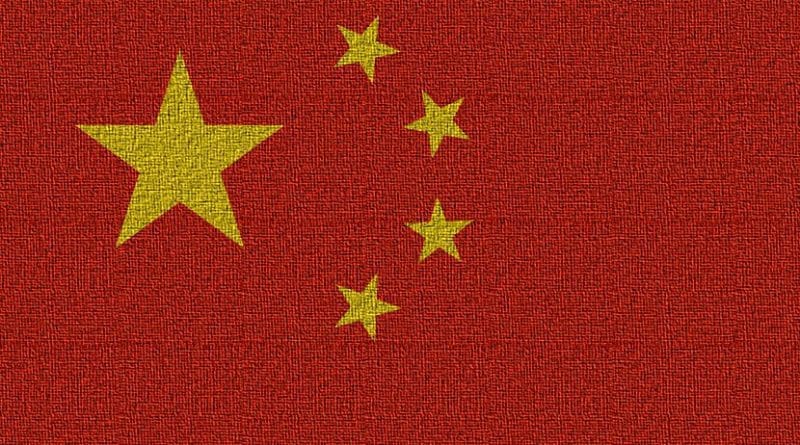China’s Ballistic Missile Defence Counter-Measures – Analysis
By IPCS
By Debalina Chatterjee
In 2002 the Janes Missiles and Rockets Report announced that China conducted tests of counter-measures on CSS-5 Ballistic Missiles. China’s ballistic missiles possess counter-measures against BMD by penetrating into an enemy’s territory by confusing, overwhelming or defeating the ballistic missile defence. These counter-measures were developed in the wake of a fear that even a limited missile defence system of the US could counterbalance the credibility of the Chinese Intercontinental Ballistic Missiles (CBIMs). This article aims to look at the technological advancements made by China in the field of counter-measures against BMD in order to maintain an offensive defence and also point out the limitations of these technologies.
China developed the MIRVs, for example the DF-21s, capable of making a BMD ineffective at mid-course or a terminal level, though not at the boost phase. However, it remained worried that countries like the US could choose to develop multiple kill vehicles to fit into the BMDs to counter these MIRVs. Therefore, it is now developing decoys, electronic jammers, chaff, decoys, use of heat resistant, radar absorbing materials and also enhancing the warhead capabilities of the ICBMs with multiple independently targeted re-entry vehicles.
Various other initiatives also seem to be in the pipeline. Chinese engineers are likely to design ASBMs to deploy aluminium-coated Mylar balloons when the ASBMs are in the exo-atmospheric phase. In these the actual warhead will be inside one of the balloons. The other balloons will contain lithium batteries in order to simulate the heat escaping from the balloon with the warhead which would make it difficult to differentiate between the warhead and the decoys.
Generally, when the missile is in the space there is a dearth of friction, thus during this time the ICBM is able to release a decoy which can travel at the same speed as the missile. The Chinese engineers are trying to overcome a hit-to-kill intercept by enclosing the ASBM warhead in a metallic shroud cooled by liquid nitrogen. This technology could even be conducive in case the BMD is in a boost phase.
The choice of any of these measures will either degrade the effectiveness of the missile defence or make it a complete failure. China can also possibly make a ballistic missiles’ trajectory depressed as had been the case with DF-31s. This could raise the apex altitude which would increase the re-entry speed thereby making interception difficult. However, these limitations can be corrected by different states using Divert and Attitude Control Systems.
China could further divide the biological and chemical weapons into sub-munitions which could make it difficult for the defence to intercept. Any launch of a long range missile attack with sub-munitions and the US National Missile Defence might not be able to counter such an attack. These counter-measures could also negate the Theatre Ballistic Missile Defence. China could use the J-20 aircrafts with stealth technologies to overwhelm a BMD. China is reported to be developing electro magnetic pulse bombs which could damage not only the C4I but also defensive mechanisms.
It also has the capacity to indulge in an offensive first strike against enemy countries, and is capable of wiping off nuclear and conventional weapons arsenal without having to bother much about the enemy’s missile defence and then use its missile defence to be able to counter the left over missiles.
In addition, one of the smartest counter-measures against BMD could be to use cruise missiles. Cruise missiles are cheaper and they can hide behind terrains and stay undetected as they fly below the radar. Stealth technology on cruise missiles could make detection difficult. The BMD could be made ineffective just by destroying the Command and Control Systems of the enemy country. China has developed cruise missiles like Land Attack Cruise Missiles like the Hongniao and the CJ-20 Air Launched Cruise Missiles or the ShaShoujian to name a few, which have given China a better deterrent credibility.
China can use the solid-fueled ballistic missiles like the DF-21s to counter a boost phase BMD as they would have shorter boost phases than liquid ones. Now-a-days with countries having effective sensors and computers, discriminating between a re-entry warhead and decoy is relatively easier in the mid-course phase. The Chinese A2/AD capability with a combination of Advanced Air Defence Systems is believed to be aimed at counteracting the ballistic missile defence, especially Indian.
Though, the Indian Akash missiles are presumed to be able to counter these Chinese manoeuvres but it is difficult to judge how effective these will actually be until the missiles are not in an operational mode. But China still needs to work on its C4ISR infrastructure like processing of information, band-width capacity, and network support for greater surveillance.
Debalina Chatterjee
Research Associate, Centre for Air Power Studies, Western Air Command, New Delhi
email: [email protected]

